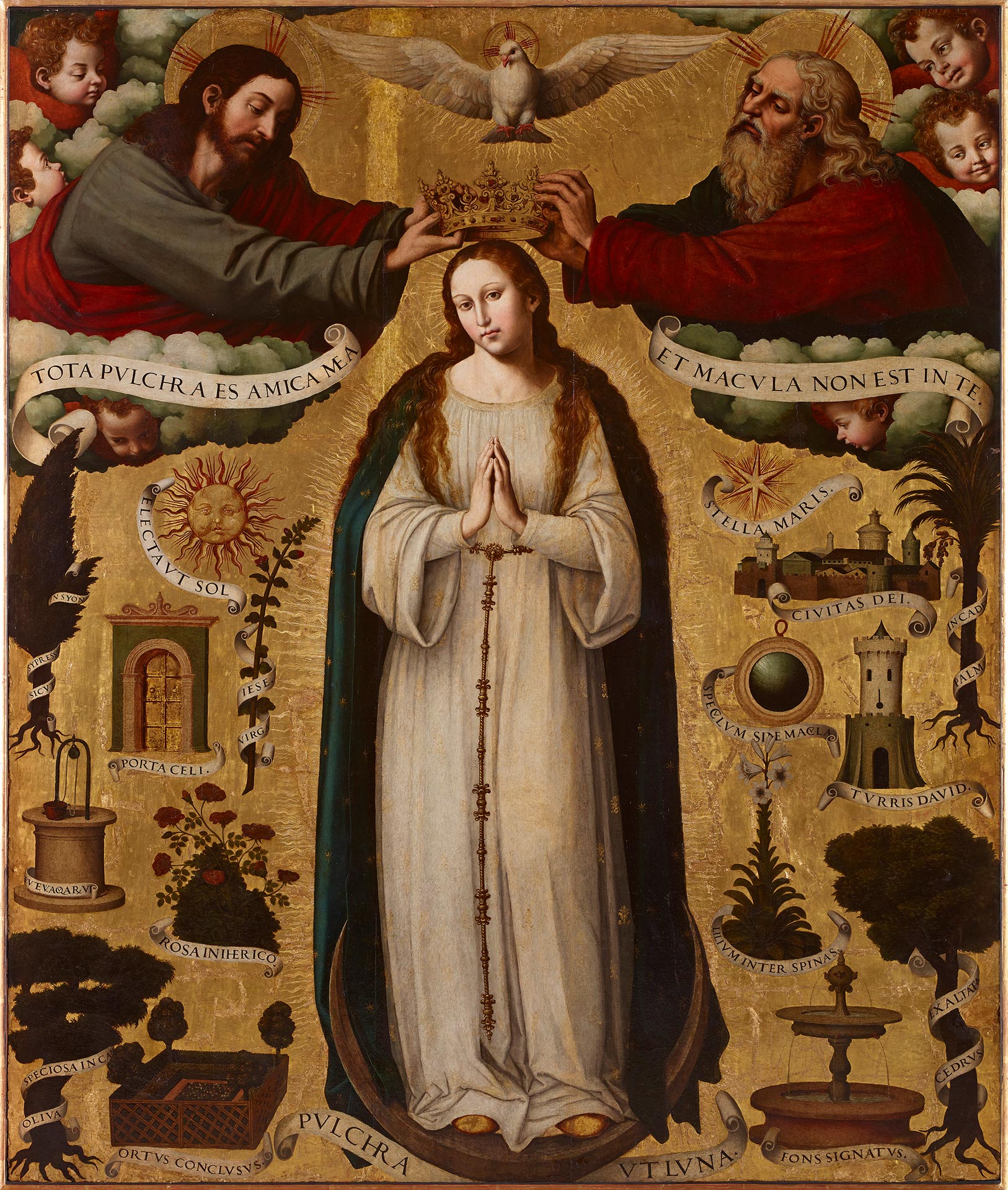
Juan de Juanes (Bocairent, Valencia, 1579)
The Immaculate Conception
circa 1537
WORK INFORMATION
Oil on panel, 218 x 184 cm
Joan Macip Navarro, better known as Joan de Joanes, came from an important dynasty of Valencian artists begun by his father, the altarpiece painter Vicente Macip (ca. 1470–1551), and continued after Joanes's death in 1579 by his son Vicente Macip Comes (ca. 1554–ca. 1622).
Regarded by scholars and the general public as one of the most important and renowned painters of the Spanish Renaissance, Joan de Joanes proved his mettle from the beginning of his career by deftly assimilating, without ever leaving his native Valencia, the novelties of the Flemish school when Gossaert's paintings came to his region, the latest trends arrived from Italy through the pictures of Sebastiano del Piombo and, to a degree, the influence of Rafael Sanzio, creating a uniquely personal style much admired by his contemporaries.
This Immaculate Conception—formerly in the collection of Infante Sebastián Gabriel and later that of Don Alfonso of Bourbon and Bourbon-Braganza—is traditionally believed to have come from the now vanished parish church of San Bartolomé in Valencia, where we know that Vicente Macip and his son Joan de Joanes were hired by the parish priest Jaime Barranco to make an altarpiece featuring the All Pure Mother of God.
The iconic, timeless quality of this painting is underscored by the gold background against which the Virgin stands out in the centre, clad in a mantle and tunic and crowned by the Trinity above. Two large scrolls flank Mary, bearing the words "TOTA PVLCHRA ES AMICA MEA / ET MACVULA NON EST IN TE" from the Song of Solomon. The symbols of the Litany of Loreto surround her: the sun, the cypress, the gate, the rod of Jesse, the well, the rosebush, the olive tree, the garden, the moon, the star, the city, the palm tree, the mirror, the tower, the lily, the cedar and the fountain.
This magnificent painting by Joanes became a prototype or model of the Immaculate Conception used in other autograph works, including the Madonnas in the town of Sot de Ferrer, that of the Jesuit church in Valencia, and another in the parish church of Santo Tomás.
Created at a later date than the main altarpiece of Segorbe, this Immaculate Conception is one of the painter's few known masterpieces from before 1540. Other works in this elite club include The Consecration of Saint Eligius at the University of Arizona Art Museum and Archive of Visual Arts, Tucson; the Baptism of Christ in the Cathedral of Valencia; the Saint Francis of Paola in the Valencian parish church of San Miguel and San Sebastián; and the Last Supper in the Museo de Bellas Artes, Valencia. [José Gómez Frechina]

